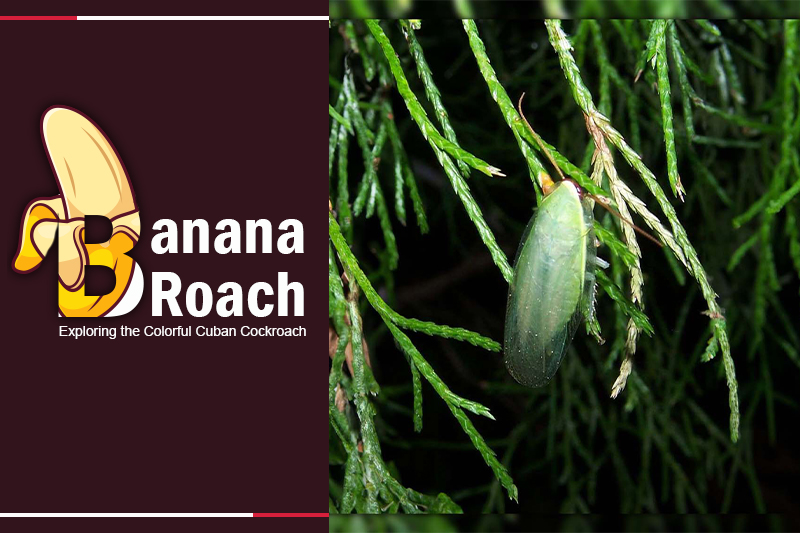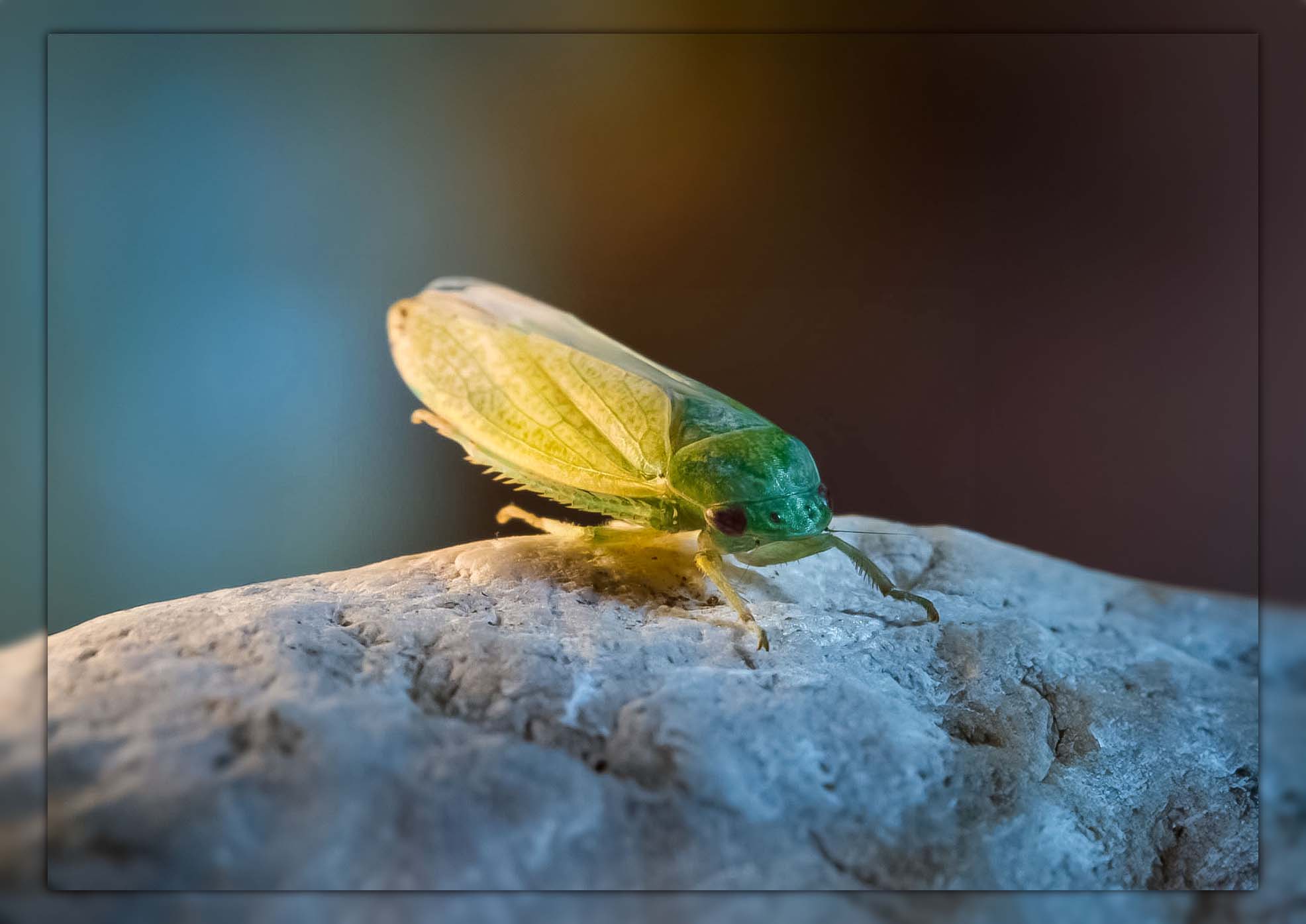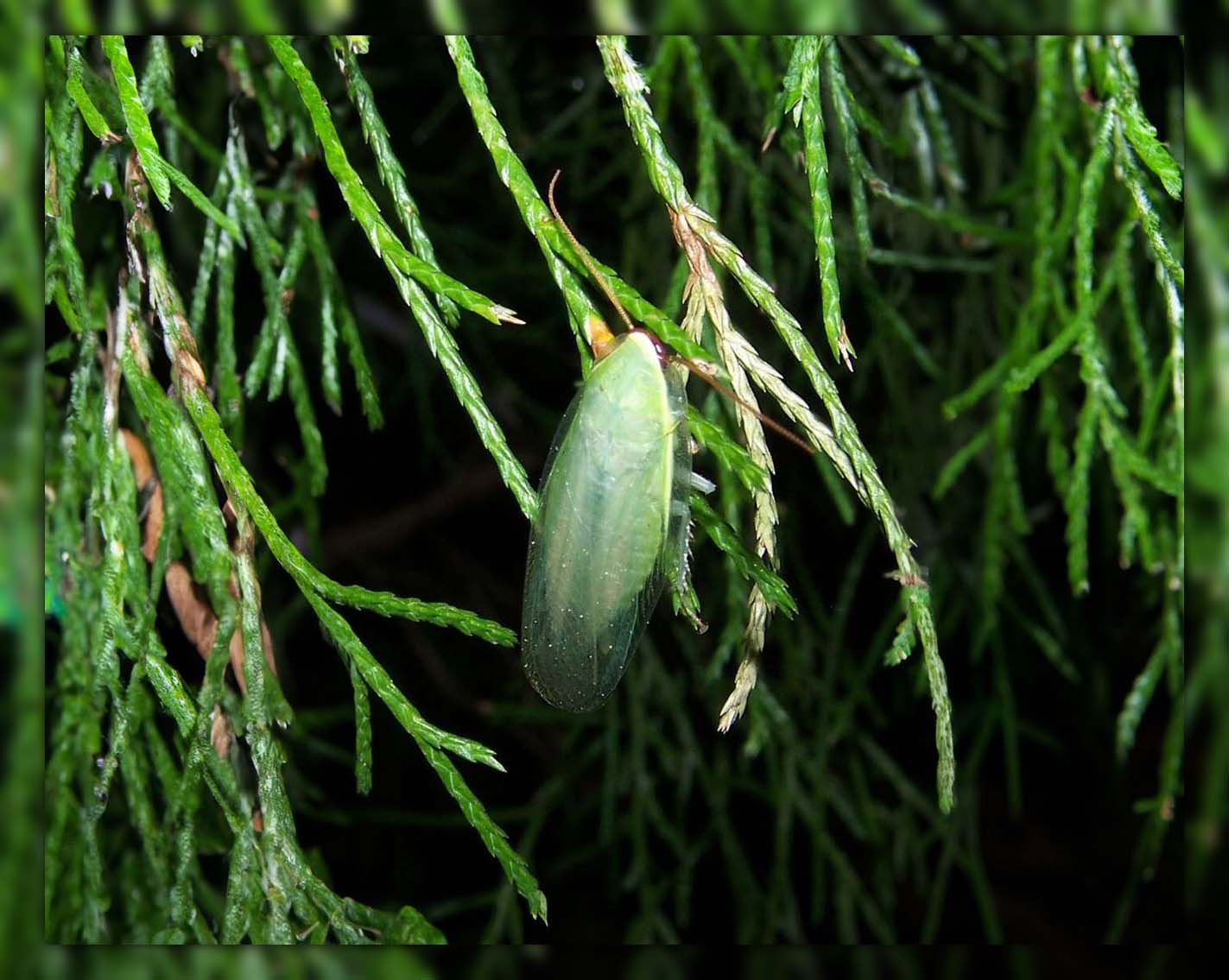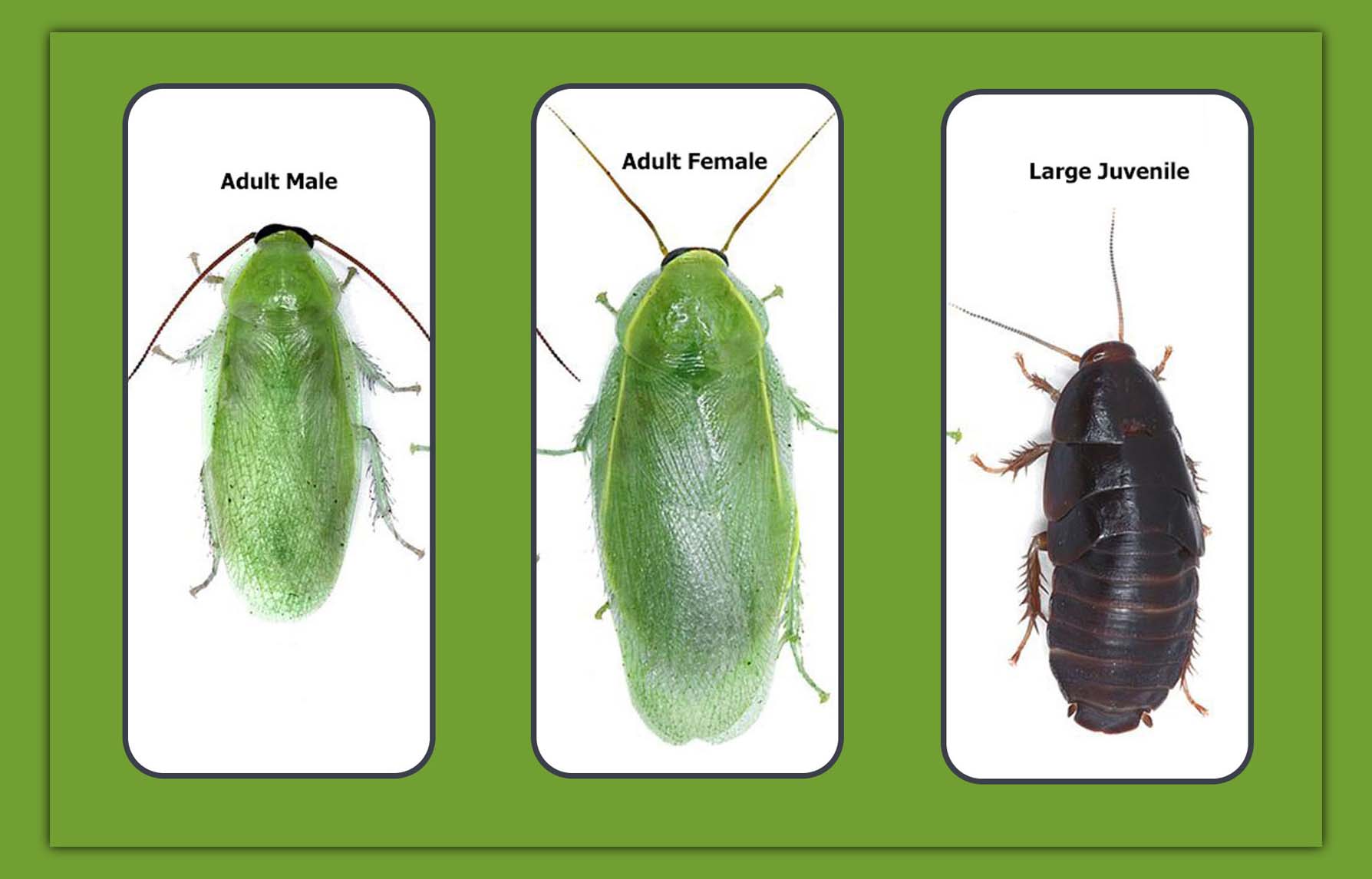From its vibrant color to its affinity for tropical conditions, the banana roach stands out in the insect world.
Join us as we explore the captivating journey of this remarkable pest.

Recognizing the Banana Roach
Embarking on the journey to identify a cockroach, many initially observe its color. Most cockroaches display color ranging from brown, tan, reddish-brown to black.
However, the Cuban cockroach stands out from the crowd. Adult Cuban cockroaches sport a distinctive leafy pale green.
Commonly referred to as the “green banana cockroach” or simply the “green cockroach,” the Cuban roach, scientifically known as Panchlora nivea, is relatively petite, measuring between 1/2 to 1 inch.
It boasts long, transparent wings and a softer physique compared to many of its cockroach relatives. This soft body makes it a favorite snack for reptiles and snakes among pet enthusiasts.
Read more What Does a Wood Roach Look Like? Understanding Its Features
Habitat of Banana Roaches
For example, American cockroaches aren’t truly native to the Americas, while German cockroaches aren’t from Germany.
Cuban cockroaches, however, are true to their name, originating from Cuba. Nowadays, they’ve extended their range to various Caribbean islands and stretch across the US Gulf Coast, from Florida down to Texas.
Unlike many others, Cuban cockroaches prefer outdoor settings and rarely come indoors. Their powerful wings enable them to fly into trees, where they feed on fruits, earning them the nickname “banana roach”.
They are also commonly found in shrubs, gardens, leaf piles, firewood stacks, mulch, and similar places.
Additionally, greenhouses can sometimes become a haven for Cuban roaches. These environments simulate their favored near-tropical conditions, supplying them with plenty of plants to consume.
Read more Can Cockroach Fly? Airborne Secrets Revealed!
Life Stages of Green Roaches
The lifecycle of Cuban cockroaches is full of surprises. For instance, the nymphs (juveniles) of Cuban cockroaches are notably different from adults.
They’re small, wingless, and their dark brown or black color makes them resemble other cockroach species.
While many cockroach species carry and later hide their egg cases, Cuban cockroaches have a distinct approach. Female Cuban roaches carry their eggs internally. After about 48 days, the eggs hatch, producing the nymphs. A single female can produce up to 60 nymphs at once.
These dark nymphs remain their initial color for nearly 100 days as they grow. Often hidden from sight, they wait until they develop wings and take on the signature green hue of mature Cuban cockroaches.
Behavior and Diet of Cuban Roaches
Cuban roaches are among the best fliers among cockroach species. They often fly around banana trees, reaching the high branches to feed on the fruit. While they can fly up to roofs, they usually don’t enter homes.
In certain outdoor spaces, the number of Cuban roaches can grow large. This could lead to shrubs, trees, and greenhouse plants getting eaten and harmed. With few enemies and their flying skills, these roaches can quickly get away from threats.
They’re most active during the evening, which is when people often turn on their lights. These roaches are drawn to any source of light, be it outdoor lamps, car lights, or TV screens.
To make lights less inviting to these roaches and other insects, consider using yellow light bulbs. These bulbs emit less of the blue light that attracts insects. However, they won’t keep all bugs away. It’s also important to check that your window screens are in good condition to keep roaches from entering during the evening.
Read more What do roach droppings look like? The Surprising Realit!
What Is the Diet of Green Banana Cockroaches?
The Cuban green cockroach’s affinity for banana trees is no mere coincidence. They have a sweet tooth, delighting in sugary fruits and the luscious sap from tree leaves.
However, at their core, they’re still cockroaches. When it comes to their diet, they’re not too different from their roach relatives.
They’re not picky eaters, happily munching on a range of decaying matter, from fallen trees and leaves to leftover food, mulch, and discarded waste. And yes, they do have a penchant for bananas.
For those who compost, a word of caution: Compost heaps are like gourmet feasts to many pests, and Cuban cockroaches are no exception.
To deter these eager diners, it’s a good idea to either bury your compost or utilize a sealed container.
Are Green Cuban Cockroaches Harmful Pests?
Cuban roaches are largely harmless. They won’t bite or sting and usually avoid human interaction.
Occasionally, attracted by lights, they might enter homes or settle on patios, but they don’t thrive or reproduce indoors, except in places like greenhouses.
Many might not appreciate these green guests in their gardens or outdoor spaces. To deter them, consider moving leaf piles, wood stacks, and trash further from living areas.
Reducing moist environments is another effective deterrent. By spreading mulch thinly and ensuring good drainage, you can make your surroundings less inviting.
While pest control can be an option, it might be excessive unless the roaches are causing noticeable plant damage.
Keeping Green Cuban Cockroaches as Pets
Some even keep Cuban cockroaches as pets, thanks to their docile nature. To care for them, replicate their natural habitat by maintaining warmth and humidity.
And, due to their ability to fly, a secure lid is essential.
Source: TerraTinkering
FAQ
Are Green Cockroach attracted to lights?
Yes, Cuban cockroaches are drawn to lights, from lamp posts to TV screens. They can even be lured into a lit pool. Blue light particularly attracts them, while yellow lights are less visible to them.
Can Banana Roaches harm bushes, trees, and plants?
Yes, Cuban cockroaches can damage banana trees by feeding on the fruit and leaves. In greenhouses, they thrive in the tropical environment and can harm young plants by feeding on them.
Conclusion
In wrapping up our exploration, the banana roach stands out as a truly fascinating member of the insect realm.
From its vibrant coloration to its unique behaviors, it never ceases to intrigue.
We’d love to hear about your own encounters or stories related to this captivating pest.
And if your interest in pests has been piqued, don’t forget to explore more enlightening blogs from Pestweek.

Calina Mabel has over 15 years of experience in the field of journalism and communications. Currently, Calina Mabel is the Content Writer for categories such as Cockroach, Ants, Bed Bugs, Mosquito, Rodent, Termite, and Flies on Pestweek.com. She aims to build content for these categories with a focus on providing valuable and accessible information to readers, in order to create the world’s largest knowledge community about Pests.
All content written by Calina Mabel has been reviewed by Emily Carter.




